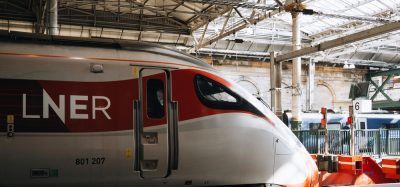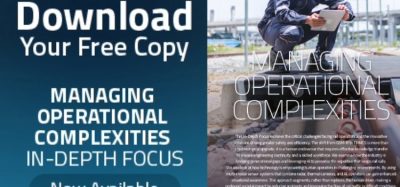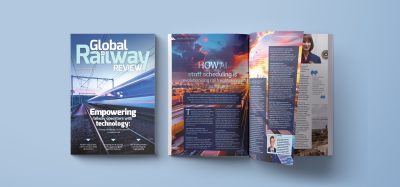OFF THE RAILS: GBRTT’s Emily Lightowler
Posted: 21 March 2024 | Emily Budgen | No comments yet
In this week’s ‘Off the Rails’, I spoke to GBRTT’s Programme Director in Business Planning and Financial Planning, Emily Lightowler.


What was your route into rail?
It was a complete accident! I spent a year in Paris after university working as an au pair and, when I came back, I wanted to move to London and keep up my French. Eurostar were hiring for customer service team members in St Pancras. I remember I applied about 10 minutes before the deadline and the rest is history! Since then, I’ve worked across many different parts of industry in policy, franchise bidding, reform, commercial contract design and delivery, in DfT during the pandemic on industry COVID response and I’ve (mostly) loved every minute of it. My tip is to follow the momentum – sometimes the most interesting things are happening in the private sector, sometimes in government and (I believe) currently in GBRTT!
What are three characteristics you believe are integral to a rail employee?
- Taking ownership; we work in a complex system where it can be difficult to feel fully accountable for delivery. To get things done, we need to work in a meaningful collaboration with lots of different organisations and people. In my experience, the most productive way to move forward is to take ownership of your own part – focus on what you and only you can do and do it well.
- Taking pride; what we do is important and often extremely challenging. I’ve never worked with anyone in my career who isn’t trying their very best to deliver within the constraints of the industry. As an industry, we’re often subject to criticism and are very good at pointing out our own failings. These are often true and fair, but I also think we can individually take pride in the work we do to deliver every day for passengers, freight users, and taxpayers.
- Taking a step back: our industry needs to be mindful of both minute-by-minute decisions and their impact and the very long-term future of rail. It can be easy to get overwhelmed by the detail and complexity of industry and that makes both short and long-term decision-making hard. I learnt at DfT that sometimes the most immediately obvious solution isn’t the best one in the medium-and-long term and that it can be good to pause and take your time to understand how day-to-day action will play out over time. Conversely, sometimes we spend too long opining on short-term decisions which will have limited impact in the long-term and this can hamper progress. Taking a step back means you can find the right balance between immediate action and consideration of the long-term.
Recently, you took part in the YRP ‘Politics in Rail’ event in London. How are GBRTT appealing to the younger generation possibly interested in a career in rail?
GBRTT is part of the Rail Unites for Inclusion group and shares best practice across this group, which has about 260 members from 90 organisations across the industry and is co-chaired by my wonderful colleagues Odis Palmer and Apeksha Naik.
We are really keen at GBRTT to attract the widest possible pool of talent and create true diversity of thought from across industry and beyond. We promote the work of Routes into Rail on our website and we partner with industry EDI related groups as you can see from the website including Young Rail Professionals. We’ve also been working collaboratively with RDG and RSSB on early careers engagement and the Rail Social Value Tool.
We also hold and attend a number of events throughout the year where we champion our internal role models and encourage them to become increasingly visible across industry and to showcase the great career opportunities that exist in rail.
You previously worked in the customer service team at Eurostar. How does this background affect your role in rail?
I really believe that spending time working in a frontline role during any career in rail is an invaluable experience. These are not easy jobs. You work shifts. You’re often tired. You’re often cold. You have limited agency over how your day at work will go. You bear the brunt of people’s frustrations and panic when things go wrong. It’s hard work. But, it gives you such a great insight into how people think and behave when they travel. You hear wonderful and interesting and, sometimes, sad stories about why people are travelling. Often the work we do, particularly in reform, can feel so long-term and theoretical and it’s always helpful to remember that, ultimately, the decisions we all make in any part of the industry are ultimately to get somebody to work, or will be the first step in a holiday, or to see friends and family. Ultimately, there is a person at the end of our decision-making process that will benefit or suffer, and it will have a real-world impact. I remember saying in my Eurostar interview that customer service isn’t rocket science, but you can truly make somebody’s day better or worse, and I have held onto that belief in the roles I have undertaken since then.
You also have a wealth of experience in policy. Has this influenced your approach to financial management at GBRTT?
To me, policy making has always felt a bit like whack-a-mole. You’re forming a policy to solve a problem or harness an opportunity, and it’s easy to focus on the single issue at hand. However, if you’re not careful, unintended consequences will pop-up as a result. So, good policy making is about taking the time to consider as many outcomes as possible once it’s implemented – intended or not – and reflect them in the policy position. In GBRTT’s financial management world, this means understanding that the information or analysis we produce for industry can be understood and implemented to deliver a number of outcomes depending on the user and what they are trying to achieve. We try and make explicitly clear that our work, analysis, and policies are only one tool and one way to look at things. That we are trying to make incremental change and that there will be trail and error involved. And that, even if our analysis seems to be indicating industry should move in a certain direction, there is always the wider stakeholder, customer, and political context to consider.
What would be the benefit of a unified Great British Railways?
If you’re working in rail today, you’ll be making choices that are rational within your own structure and incentives. But when you look at all of these decisions and how they come together across the whole system, they often produce illogical results that were unintended but have an impact on customer experience or industry efficiency overall.
Bringing track and train together under a unified Great British Railway will mean that, for the first time in a generation, the way we fund, plan and deliver passenger and freight services, along with the infrastructure management, will be done in lockstep.
This will increase the likelihood of infrastructure renewals and maintenance being planned in a market-led way and will mean that the requirements of passenger and freight operators are reflected in strategic thinking and planning to a much greater degree than today.
It will mean that accountabilities for the management of investment and funding rest in one place so that track and train complement each other.
For customers, it will provide a coherent product so that there is less confusion around rail tickets (I don’t know many people who aren’t confused by today’s fare structure!) and you know who is accountable if things go wrong.
For local funders and partners, it will make it easier to engage and work with industry decision-makers to reflect the needs of communities.
What is the biggest challenge for GBRTT to achieve GBR?
Obviously, the biggest challenge currently is securing legislation which needs cross-industry and government support. The publication of the draft bill for pre-legislative scrutiny is a very welcome step on the long road to rail reform! We also need to understand the cultural barriers to change – we have all spent our whole careers in an industry which has fostered, incentivised even, competition and the fracturing of accountabilities, and there is a huge amount of soft and hard cultural changes that need to come to pass if GBR is to be a success. Partly, this will depend on future incentive structures – corporate, contractual, and individual – that will need to promote collaborative working towards a shared goal. To support this, GBRTT is building whole-industry financial management tools (which you can read about here). The Industry Financial Model, whilst no means a perfect reflection of industry costs, is a huge leap forward into better understanding how track and train finances interact with, and influence, each other. These kinds of tools will make it easier for industry decision-makers to make the most sensible trade-offs as we move towards a more integrated model.
We’ve seen the introduction of a PAYG trial across some stations. Could you see this roll out working across the UK?
In short, yes! The current trials are happening to test this very thing. It’s clear that simpler fares and payment mechanisms are crucial in bringing passengers back to rail and growing our mode share. We’re excited to see how these trials will play out and we look forward to continuing the excellent collaborative work that is taking place across industry to deliver simpler, better fares and ticketing for passengers.
The Great British Rail Sale has recently been relaunched. What planning did this involve?
Planning for the second sale started with a thorough evaluation of the first one, which took place in spring 2022. It generated around £3.3 million in net incremental revenue to the industry and prompted around 70,000 adults who hadn’t used a train since the pandemic to take a trip. In short, the first sale evidenced the need to get the collective clout of all parts of the industry working together to drive growth.
We then started trying to pin down a consistent and simple national proposition for customers, building on the lessons of the first sale, that everyone could support and which could be made widely available – including through third party retailers
With so many different perspectives, the challenge we had at GBRTT was negotiating a proposition that factored in the different business needs and individual commercial interests of the various train operators. Train operators serve different markets, with different products and buying behaviour.
For example, customers making longer distance trips are more likely to plan and book well in advance, while customers making shorter journeys are more likely to plan at short notice and often buy their tickets on the day. Similarly, long distance operators provide seat reservations and are better able to control the number of tickets they offer by specific train, while other operators don’t have reservations so aren’t able to control availability in the same way.
GBRTT worked with RDG to coordinate with train operators, and together we worked as the interface with the DfT. Even the timing of the sale was a negotiation, with varying seasonal demand patterns across different operators and different commercial points of view on when the best time would be to run the offer.
In the end, the second Great British Rail Sale was a collaboration between 16 different operators across England and Wales, GBRTT, RDG and the DfT. Pulling together is not always easy in today’s fragmented environment, but the result was a win-win for customers, who were able to take advantage of the discounted fares, and (based on emerging findings) for rail industry finances.
This year, 2024, is Global Railway Review’s thirtieth birthday, its pearl anniversary. Do you have a pearl of wisdom for the industry?
There is no silver bullet for solving industry’s challenges. We need to identify what we can do now and crack on. And, as ever, hire more women!
More Like This
OFF THE RAILS: Amtrak CEO Stephen Gardner
OFF THE RAILS: Austrade’s David Fisken
OFF THE RAILS: Australian ONRSR’s Dr. Natalie Pelham
Stay Connected with Global Railway Review — Subscribe for Free!
Get exclusive access to the latest rail industry insights from Global Railway Review — all tailored to your interests.
✅ Expert-Led Webinars – Gain insights from global industry leaders
✅ Weekly News & Reports – Rail project updates, thought leadership, and exclusive interviews
✅ Partner Innovations – Discover cutting-edge rail technologies
✅ Print/Digital Magazine – Enjoy two in-depth issues per year, packed with expert content
Choose the updates that matter most to you. Sign up now to stay informed, inspired, and connected — all for free!
Thank you for being part of our community. Let’s keep shaping the future of rail together!
Related topics
Conferences & Events, Digitalisation, Electrification & Cabling, Franchising, Freight, Funding & Finance, High-Speed Rail, Infrastructure Developments, Operational Performance, Passenger Experience/Satisfaction
Related organisations
Department for Transport (DfT), Eurostar, Great British Railways Transition Team (GBRTT), Rail Delivery Group (RDG), Rail Safety and Standards Board (RSSB), Young Rail Professionals (YRP)








